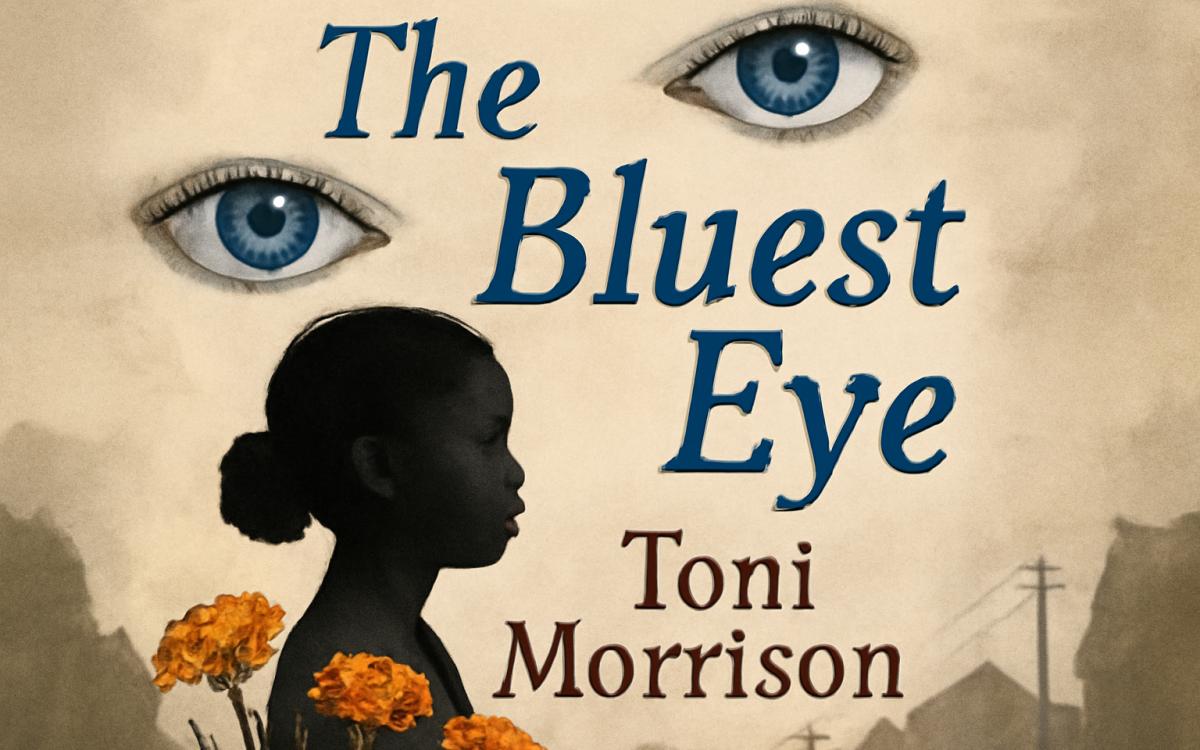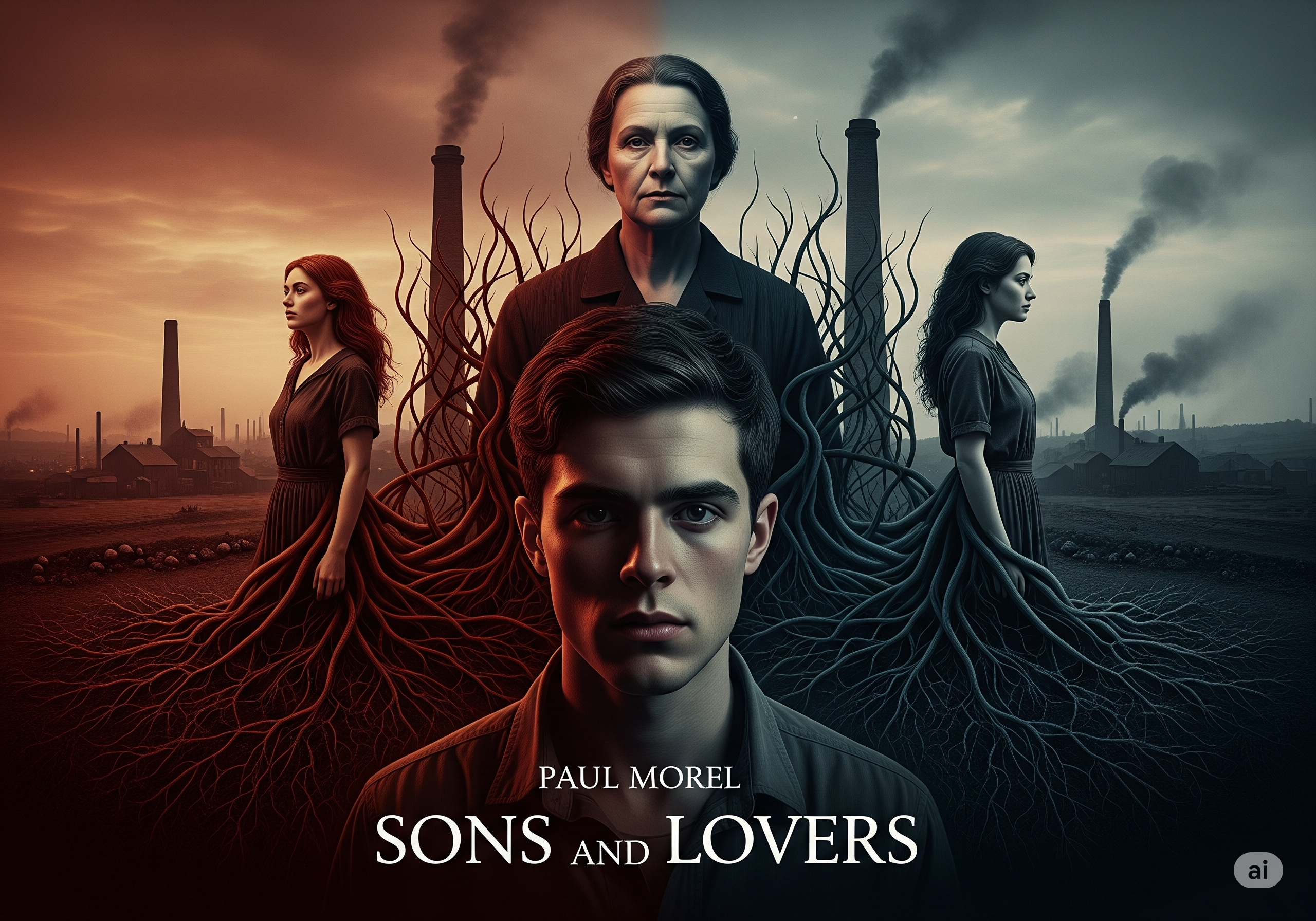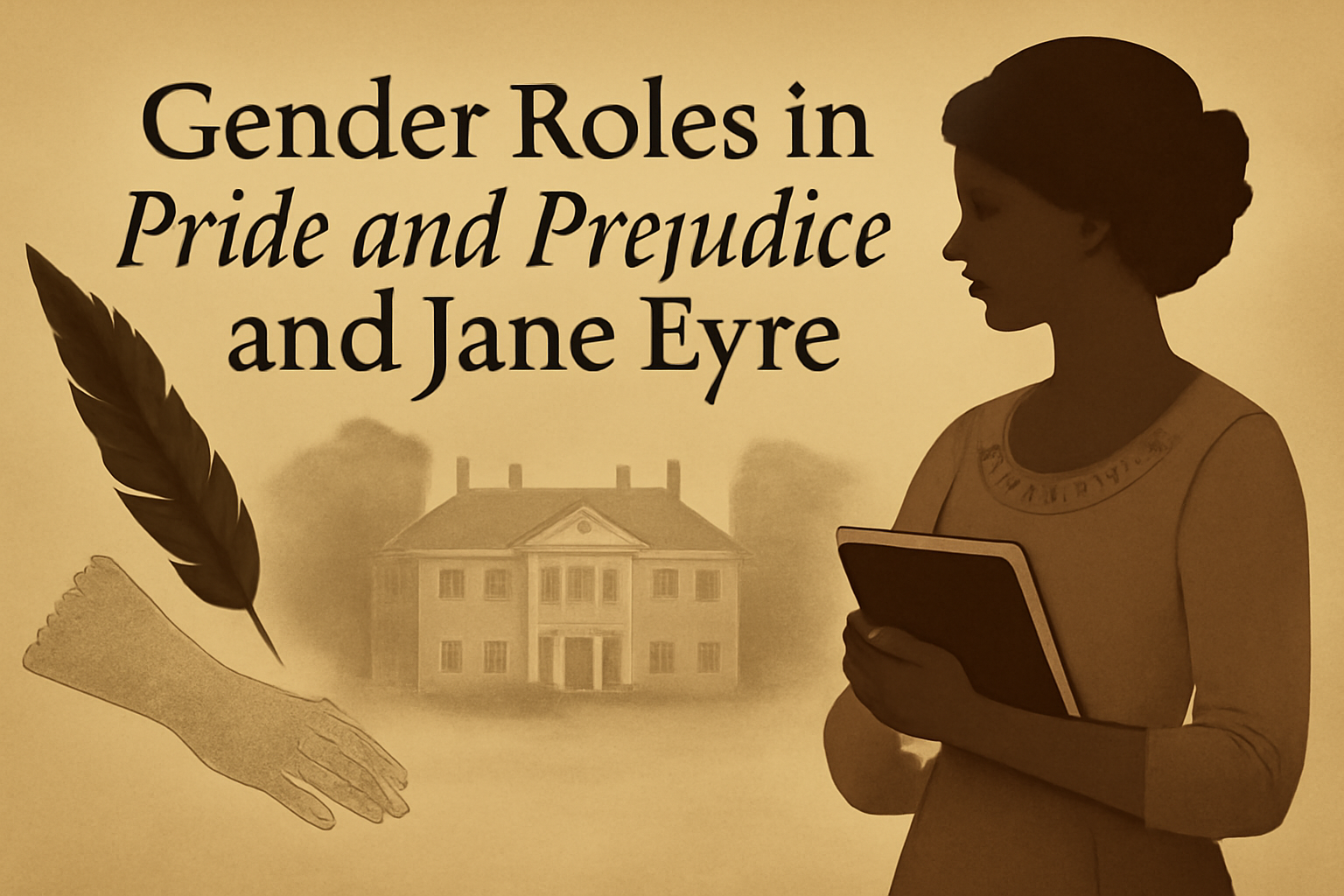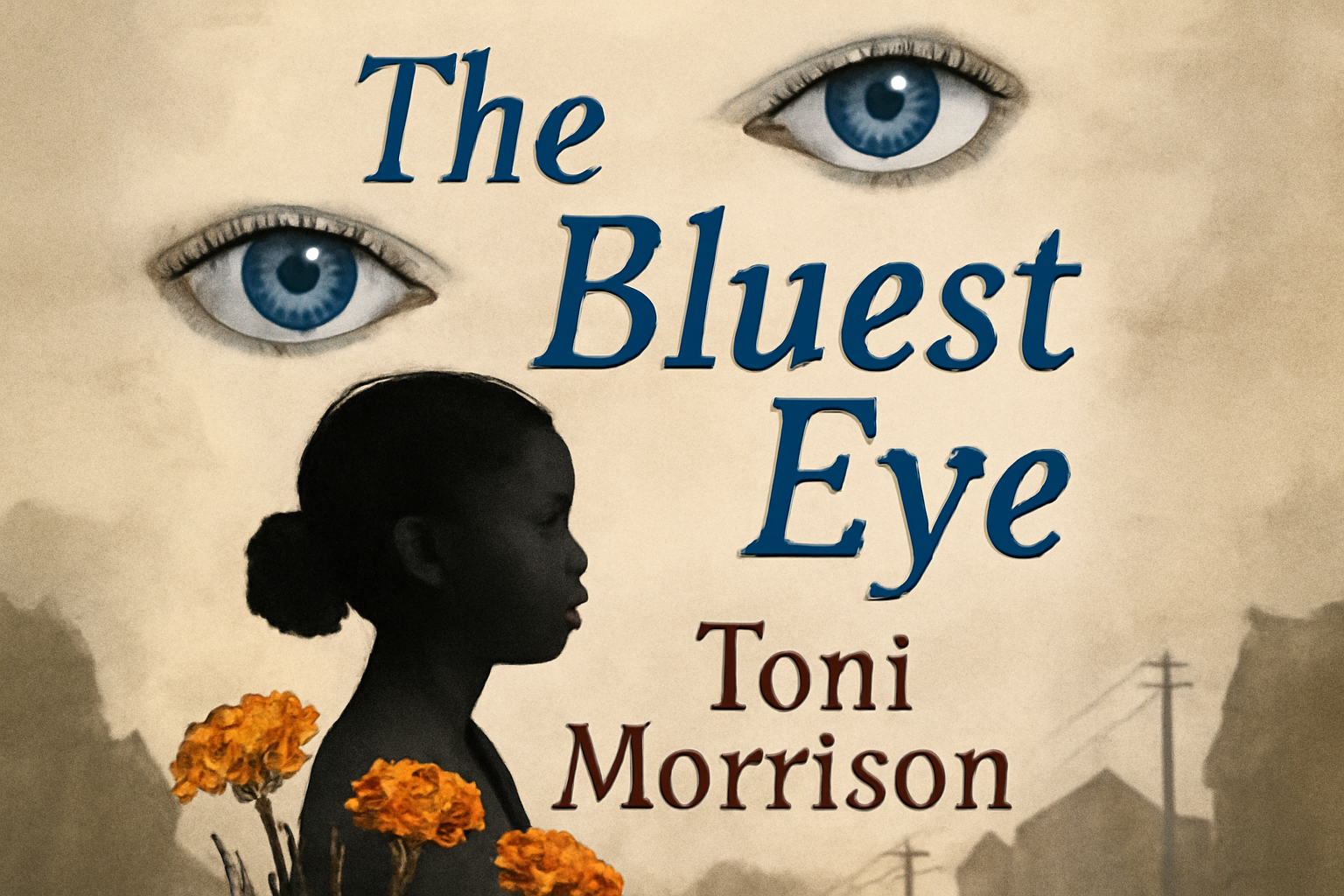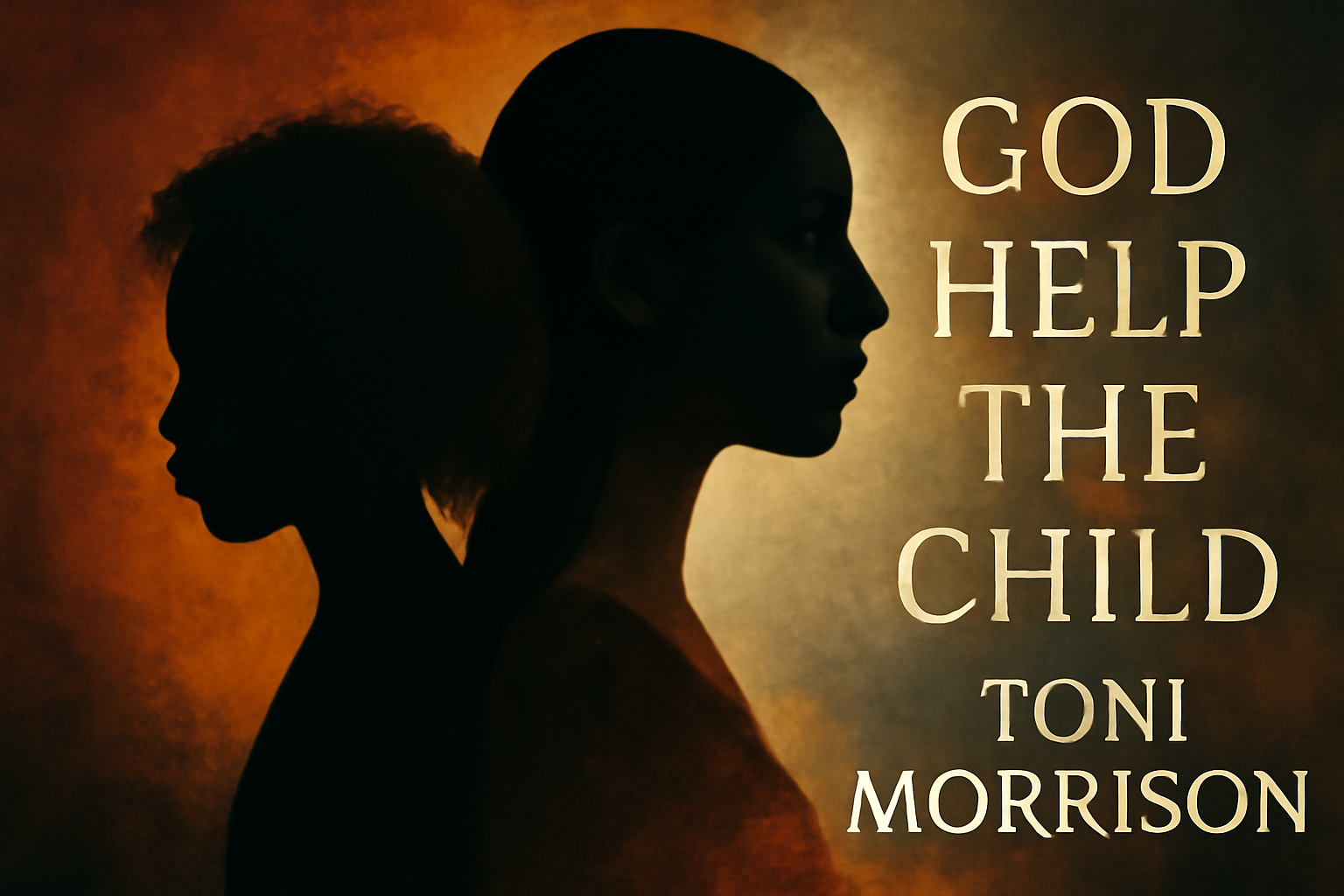INTRODUCTION
When Toni Morrison penned “The Bluest Eye” in 1970, she couldn’t have anticipated how her debut novel would become one of the most haunting and controversial works in American literature. This isn’t just another coming-of-age story—it’s a brutal examination of how society’s toxic beauty standards can destroy innocent lives, particularly those of young Black girls who dare to dream of acceptance in a world that systematically rejects them.
Morrison’s masterpiece follows eleven-year-old Pecola Breedlove, whose desperate wish for blue eyes becomes a symbol of the devastating impact of internalized racism. But here’s what makes this novel truly extraordinary: it doesn’t just tell Pecola’s story. It dissects an entire community’s relationship with beauty, self-worth, and survival in 1940s America, creating a literary mirror that reflects uncomfortable truths about American society.
Understanding The Bluest Eye
Set in Lorain, Ohio—Morrison’s own hometown—during the aftermath of the Great Depression, “The Bluest Eye” introduces us to a world where poverty, racism, and dysfunction intersect with devastating consequences. Morrison deliberately chose this setting, not as mere backdrop, but as a character itself that shapes every interaction, every dream, and every heartbreak within the narrative.
The novel’s structure is deliberately fragmented, mirroring the fractured lives of its characters. Morrison opens with excerpts from a Dick and Jane primer—that sanitised, middle-class white fantasy that was forced fed to children of all backgrounds. These excerpts appear three times: first clearly formatted, then without punctuation, and finally as an incomprehensible jumble of letters. This progression isn’t accidental; it represents the disintegration of the American Dream for those society deems unworthy of it. FULL TEXT
The Destructive Power of Beauty Standards in The Bluest Eye
Morrison’s central thesis in “The Bluest Eye” is devastatingly simple yet profound: society’s worship of white beauty standards doesn’t just exclude—it destroys. The novel provides what Morrison herself called “an extended depiction of the ways in which internalised white beauty standards deform the lives of Black girls and women”.
Throughout the narrative, we encounter the insidious ways these standards permeate daily life. Pecola receives a white baby doll for Christmas—a “loving gift” that nonetheless reinforces her own inadequacy. Shirley Temple becomes an idol, her blond curls and blue eyes representing everything Pecola believes she lacks. Even Mary Jane candies feature a little white girl whose image Pecola literally consumes, hoping somehow to absorb her beauty.
The Psychological Violence of Beauty Worship
What Morrison brilliantly illustrates is how beauty standards function as a form of violence—not physical, but psychological and spiritual. Pecola’s obsession with blue eyes isn’t vanity; it’s survival strategy. She believes, with heartbreaking logic, that if she possessed the “right” kind of beauty, the cruelty in her life would transform into love and acceptance.
This isn’t merely about individual self-esteem. Morrison shows us how entire communities become complicit in this destruction. When Maureen Peal arrives at school with her light skin and “good” hair, even the Black children recognise her proximity to white beauty standards and treat her differently. The novel exposes how colorism—discrimination based on skin tone within racial groups—creates hierarchies that pit oppressed people against each other.
The adults aren’t immune either. Pauline Breedlove, Pecola’s mother, falls in love with white movie stars and their glamorous world, eventually preferring the white child she cares for at work over her own daughter. This preference isn’t portrayed as simple maternal failure—Morrison traces it back to Pauline’s own rejection by beauty standards that never had space for women who looked like her. FOR A DETAILED ANALYSIS
Pecola Breedlove: A Character Study in Trauma and Desire
Pecola Breedlove stands as one of literature’s most tragic figures—not because her story is unique, but because it’s all too common.
The Architecture of Destruction
Pecola’s destruction doesn’t happen overnight. Morrison carefully constructs the circumstances that make her vulnerable: extreme poverty, family dysfunction, community rejection, and systemic racism. The Breedlove family lives in a storefront, their poverty visible to everyone who passes by. This physical exposure mirrors their emotional vulnerability—they have no private space for healing or protection.
The family dynamics are particularly devastating. Cholly Breedlove, Pecola’s father, carries his own history of trauma and rejection. Morrison doesn’t excuse his eventual rape of Pecola, but she provides context that shows how cycles of violence perpetuate across generations. Cholly was humiliated during his first sexual experience by white men who forced him to continue while they watched—a trauma that warped his understanding of intimacy and power.
Mrs. Breedlove, meanwhile, has found her own escape through movies and the white family she works for. She has more tenderness for their child than for Pecola, whom she sees as confirmation of her own inadequacy. This maternal rejection devastates Pecola more than any external cruelty could.
The Final Breakdown
When Pecola finally visits Soaphead, a self-proclaimed healer, her desperation has reached its peak. She doesn’t ask for money, love, or even safety—she asks for blue eyes, believing they will solve all her problems. Soaphead’s cruel deception, making her believe she’s received her wish, pushes Pecola into the madness that becomes her only refuge.
The novel’s ending is particularly haunting. Pecola, detached from reality, believes she has the bluest eyes and talks to an imaginary friend daily. Morrison describes her as a “winged but grounded bird,” focused on a blue void she cannot reach or see. This blue void fills the valley of her mind.
Symbolism and Metaphors in Toni Morrison’s Narrative
Morrison’s use of symbolism in “The Bluest Eye” operates on multiple levels, creating layers of meaning that reward careful reading. The blue eyes themselves function as the novel’s central symbol, representing not just beauty, but the promise of love, acceptance, and visibility that Pecola has been denied.
The Significance of Blue Eyes as a Symbol
Blue eyes in the novel symbolise far more than physical beauty. They represent the power to be seen, valued, and loved. Pecola believes that with blue eyes, “people would not want to do ugly things in front of her or to her”. This insight reveals her understanding that cruelty often accompanies invisibility—she’s tormented partly because society refuses to see her as worthy of protection or care.
The “bluest” eye of the title carries additional meaning. Beyond the superlative form suggesting the most beautiful eyes, “bluest” can also mean “saddest”—making Pecola literally the saddest eye/I, isolated in her pain. Morrison’s play on eye/I emphasizes how vision and identity intertwine throughout the narrative.
Marigolds and the Natural World
The marigolds that Claudia and Frieda plant represent hope, fertility, and the natural order. The girls believe that if their marigolds grow, Pecola’s baby will survive. When the flowers fail to bloom, it foreshadows the baby’s death and symbolizes how the natural cycles of growth and renewal have been perverted by violence and trauma.
Morrison uses nature imagery throughout the novel to contrast with the artificial beauty standards imposed by society. The earth wants to nurture and grow, but human cruelty prevents this natural flourishing.
Houses and Homes as Mirrors of Identity
The various homes in the novel reflect their inhabitants’ psychological states and social positions. The Breedlove storefront, with its constant state of disrepair, mirrors the family’s internal dysfunction. In contrast, the MacTeer house, while drafty and humble, is filled with love and stability—reflecting the family’s emotional health.
The contrast becomes even more stark with the white family’s home where Pauline works. Its perfection and order represent the unattainable ideal that destroys her ability to find beauty or value in her own life and family.
The Impact of Internalised Racism on Identity Formation
Morrison’s exploration of internalised racism in “The Bluest Eye” remains one of the novel’s most powerful and disturbing elements. The term “internalized racism” refers to the acceptance and incorporation of negative stereotypes and beliefs about one’s own racial group. Throughout the novel, we see how this psychological violence manifests in various characters.
The Community’s Complicity
What makes Morrison’s analysis particularly devastating is her portrayal of how entire communities participate in their own oppression. The children who torment Pecola at school aren’t white—they’re other Black children who have learned that distancing themselves from the “ugliest” among them might offer some protection.
The novel shows how colourism operates within the Black community itself. Light-skinned characters like Maureen Peal receive better treatment, while darker-skinned individuals like Pecola face additional rejection. This internal hierarchy serves white supremacy by ensuring that oppressed groups police themselves rather than challenging the system that oppresses them all.
The Generational Transmission of Trauma
Morrison traces how racist beauty standards pass from generation to generation like a virus. Parents who have internalised these standards inevitably transmit them to their children, often with devastating consequences. Mrs. Breedlove prefers the white child she cares for over her own daughter. This is not just personal failing but decades of conditioning. She was taught to see darkness as ugly and whiteness as beautiful.
The novel suggests that breaking these cycles requires not just individual healing, but community-wide recognition and resistance. Claudia’s rejection of white dolls and beauty standards offers hope, but Morrison hints that even Claudia will eventually “learn” to worship whiteness as she matures.
Morrison’s Innovative Narrative Techniques and Style
Toni Morrison’s writing style in “The Bluest Eye” established many of the techniques that would define her career and influence countless other writers. Her approach to storytelling draws from African American oral traditions while incorporating modernist literary techniques.
Multiple Perspectives and Fragmented Time
Morrison deliberately breaks the timeline, shifting between past and present to show trauma beyond linear time. The novel doesn’t just tell what happened; it shows how the past shapes every present interaction and decision.
The use of multiple perspectives serves several purposes. It prevents readers from maintaining comfortable distance from the story, forces them to see events from various viewpoints, and mirrors the way communities process collective trauma. No single voice could contain the full scope of the novel’s critique.
Social Media and Beauty Standards
In an era of Instagram filters, surgery, and digital edits, Morrison’s critique of beauty standards feels urgent. Pressure on young people, especially young women of colour, to fit narrow ideals has increased since 1970. Practices like skin bleaching, hair straightening, and cosmetic procedures mirror Pecola’s desperate wish for blue eyes. The novel shows these choices are not just vanity but responses to systemic messages about body value.
Mental Health and Trauma
Morrison’s portrayal of Pecola’s psychological breakdown also speaks to contemporary understanding of trauma and mental health. The novel shows how individual trauma connects to historical and community trauma, anticipating current discussions about intergenerational trauma and its effects on communities of colour.
Pecola’s retreat into madness isn’t portrayed as simply personal pathology but as a rational response to impossible circumstances. This perspective challenges stigmatising views of mental illness and highlights the role of social conditions in psychological well-being.
Academic Adoption
The novel’s reputation grew steadily throughout the 1970s and 1980s, particularly after Morrison won the Nobel Prize in Literature in 1993. Academic institutions began incorporating the work into curricula, recognising its sophisticated treatment of complex social issues. EXPLORE OTHER WORKS BY THE AUTHOR
Conclusion
“The Bluest Eye” endures because it refuses to offer easy answers or comfortable resolutions. Morrison doesn’t provide a happy ending where love conquers all or where individual resistance overcomes systemic oppression. Instead, she offers something more valuable: a clear-eyed analysis of how beauty standards function as tools of oppression and a challenge to readers to examine their own complicity in these systems.
The novel’s power lies not just in its devastating critique but in its demonstration of human resilience. While Pecola cannot survive the forces arrayed against her, Claudia does—and her survival offers hope for different possibilities. The novel suggests that change requires not just individual healing but collective recognition of the systems that create victims like Pecola in the first place.
Morrison once said that she wrote “The Bluest Eye” because she wanted to read it and it didn’t exist. In creating the book she wanted to read, Morrison gave the world a challenging and inspirational masterpiece. More than half a century later, it still provokes thought and change among readers. The novel remains essential reading for anyone who wants to understand beauty, race, and power in society. It also shows how literature can act as both a mirror and a catalyst for social change.
During today’s focus on racial reckoning, “The Bluest Eye” provides historical context and remains highly relevant. Pecola’s story reminds us the struggle for dignity, visibility, and value still goes on. Literature continues to play a vital role in the ongoing fight for justice and recognition.
Frequently Asked Questions
1. What is the main theme of The Bluest Eye?
The primary theme is the destructive impact of internalised racism and unattainable beauty standards on Black individuals and communities. Morrison explores how longing for blue eyes symbolises a desire for acceptance, worthiness, and love within a society steeped in colorism and white supremacy.
2. Who is Pecola Breedlove, and why is her story important?
Pecola Breedlove is the young, Black female protagonist whose fervent wish for blue eyes represents the damaging effects of societal racism and colorism. Her tragic story exposes the consequences of a community’s and family’s inability to protect its most vulnerable members.
3. Why did Toni Morrison write The Bluest Eye?
Morrison wrote the novel after a childhood experience where a friend expressed a wish for blue eyes. This deeply disturbed Morrison, who wanted to examine how society teaches Black girls to devalue themselves and aspire to impossible beauty ideals.

